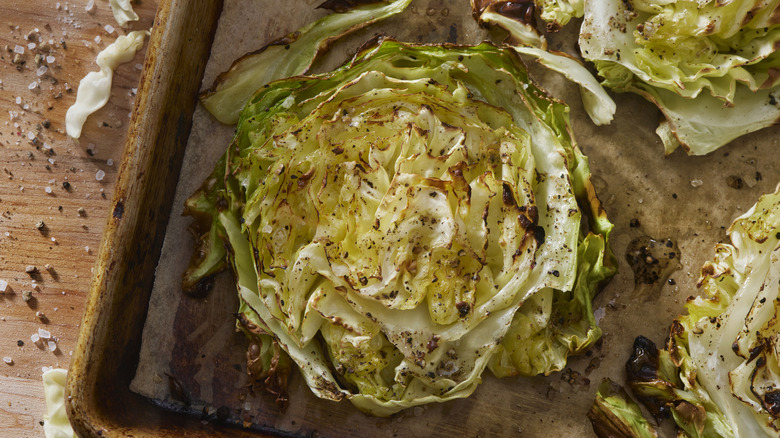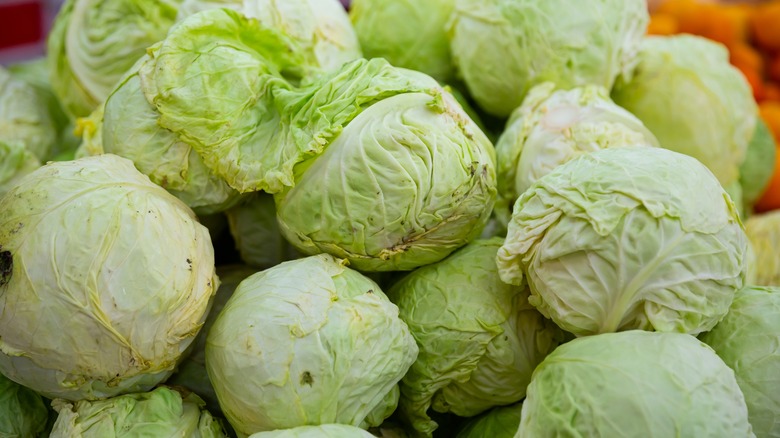The Types Of Cabbage You Should Avoid Caramelizing
Standing in the grocery aisle, you face an array of vibrant cabbages, from green to red and purple to Napa, Savoy, and Tuscan. You've been wanting to try a new recipe — caramelized cabbage (also known as roasted cabbage or melted or melting cabbage) — but are unsure which type of cabbage to put into your shopping cart. Caramelizing the cabbages will transform them, turning them extra tender and almost velvety, with hints of sweetness and tantalizing leafy edges that retain a bit of crispiness.
But not every cabbage variety works equally well for caramelization, and there are some you should definitely avoid when attempting this dish: namely, the Savoy and Napa cabbage varieties. These cabbages have leaves that wilt quickly from heat and longer cooking times; they will also introduce slightly spicier and more bitter notes to the overall dish. This inherent flavor profile of Napa and Savoy cabbages can clash with the deep savory taste and subtle sweetness you're striving for in a cozy caramelized cabbage dish.
The ideal cabbages for caramelization: green and red
Of course, if there are some cabbages to avoid caramelizing, there also are some varieties that work particularly well for this cooking method — and that's where green or red cabbages come in. With their sturdier and thicker leaves, these varieties can withstand the intense heat and extended cooking time required for caramelization. The resulting dish consists of melty, silky, caramelized leaves instead of a wilted, mushy mess. Red and green cabbage leaves will also readily absorb all the dish's flavors — such as bay leaves, caraway seeds, and aromatics like garlic and red onion — while giving you the perfect mouthfeel.
To caramelize cabbage, cut a washed and dried green or red cabbage into wedges, with the core not cut all the way through to hold all the leaves together during the cooking process. Pan-sear the wedges until golden brown, along with chopped red onions, ginger, and garlic. Then, deglaze the pan with a splash of white wine and add a splash of apple cider or rice vinegar for acidity; this will balance out the cabbage's nuanced earthy flavor. A savory broth, like chicken, mushroom, or even dashi combined with some honey, miso, mustard, and aromatic herbs sets the stage for oven-roasting the cabbage to melty, caramelized perfection. As long as you start with a cabbage that will hold up to the process and absorb flavors rather than lending bitterness of its own, you'll be assured a delicious, comforting plate.

